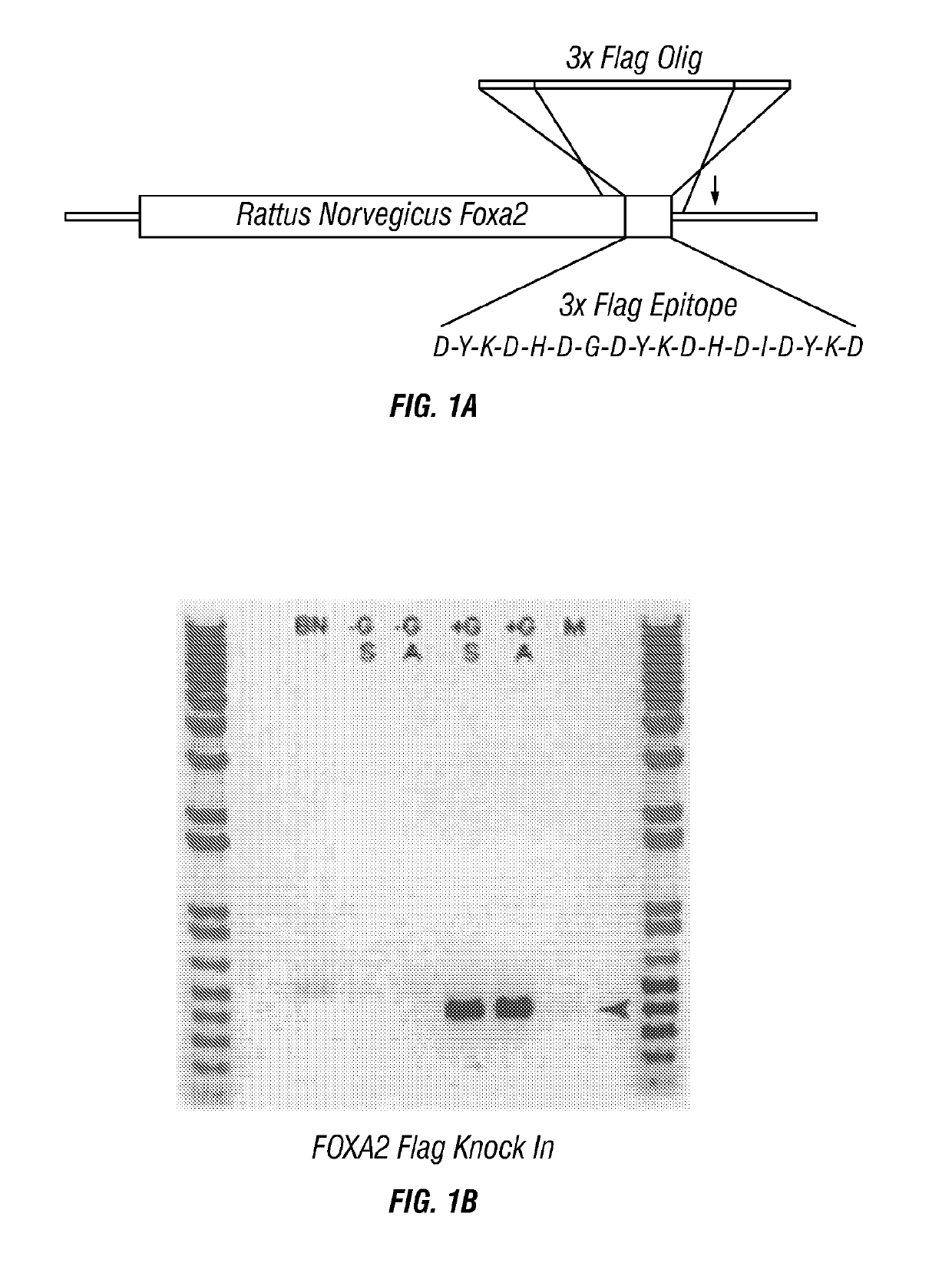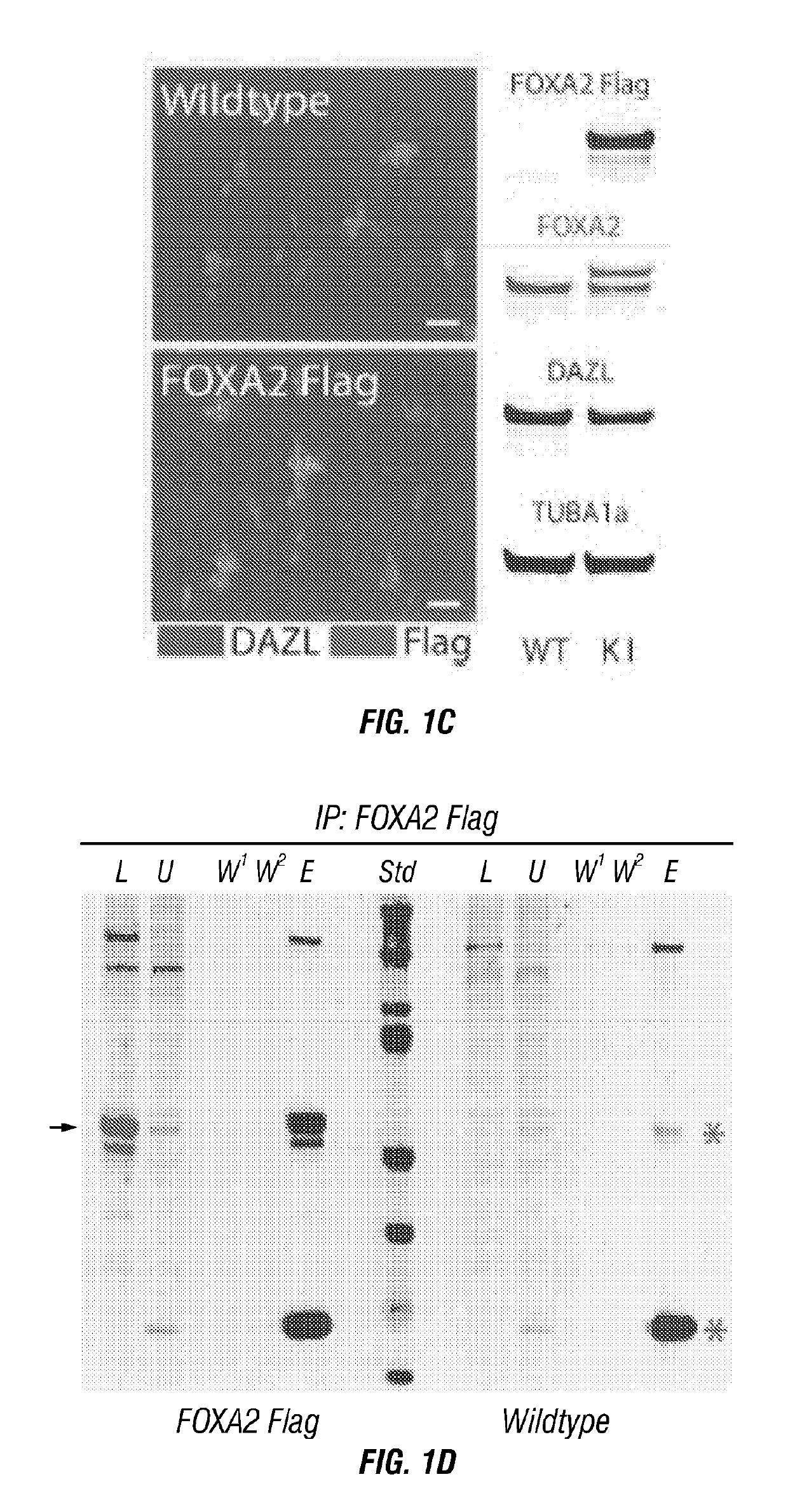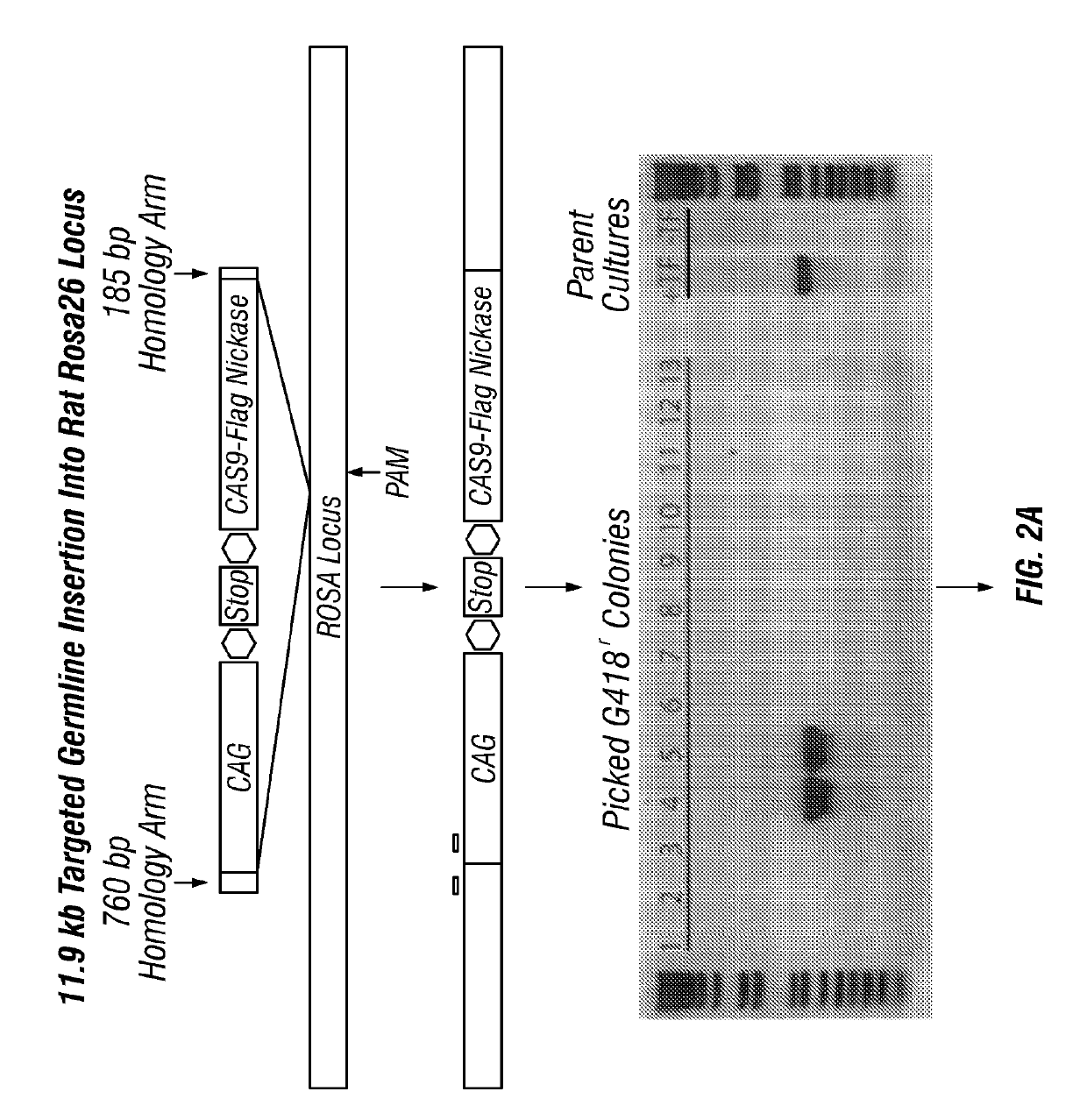Generation of genetically engineered animals by crispr/cas9 genome editing in spermatogonial stem cells
a technology of genome editing and spermatogonial stem cells, applied in the field of molecular biology, medicine and genetics, can solve the problems of severe disruption of spermatogenesis in these rats, decrease or limitation of the expression of one or more gene products, and achieve 100% germline transmission
- Summary
- Abstract
- Description
- Claims
- Application Information
AI Technical Summary
Benefits of technology
Problems solved by technology
Method used
Image
Examples
example 1
Example 2—Precise Genomic Modifications in Rat Germlines by Homology Directed Repair in Spermatogonial Stem Cells
[0151]Rat Spermatogonial Stem Cell Lines. Rat (Rattus norvegicus) spermatogonial lines were derived from laminin-binding spermatogonia (Hamra, 2002) isolated from individual homozygous SD-Tg(SB-T2ER-Dazl-iCre4-T2ER)4Fkh Sprague Dawley rats, heterozygous SD-Tg(ROSA-EGFP)2-4Reh Sprague Dawley rats, wildtype Brown Norway rats, or transgenic BN-Tg(Dazl-dtTomato)Fkh Brown Norway rats. SD-Tg(SB-T2ER-Dazl-iCre4-T2ER)4Fkh rats are referred to as tgGCS-iCre rats because they exhibit germ cell specific expression of a 4-hydroxytamoxifen inducible form of T2ER-CRE-T2ER recombinase (iCRE) (unpublished FKH). SD-Tg(ROSA-EGFP)2-4Reh rats are referred to as tgGCS-EGFP rats because they exhibit germ cell specific expression of enhanced green fluorescent protein (EGFP) (Cronkhite et al., 2005). Inbred Brown Norway rats were from original wildtype stock (Charles Rivers, Inc.). Spermatogonia...
PUM
| Property | Measurement | Unit |
|---|---|---|
| doubling time | aaaaa | aaaaa |
| doubling time | aaaaa | aaaaa |
| stem cell composition | aaaaa | aaaaa |
Abstract
Description
Claims
Application Information
 Login to View More
Login to View More - R&D
- Intellectual Property
- Life Sciences
- Materials
- Tech Scout
- Unparalleled Data Quality
- Higher Quality Content
- 60% Fewer Hallucinations
Browse by: Latest US Patents, China's latest patents, Technical Efficacy Thesaurus, Application Domain, Technology Topic, Popular Technical Reports.
© 2025 PatSnap. All rights reserved.Legal|Privacy policy|Modern Slavery Act Transparency Statement|Sitemap|About US| Contact US: help@patsnap.com



